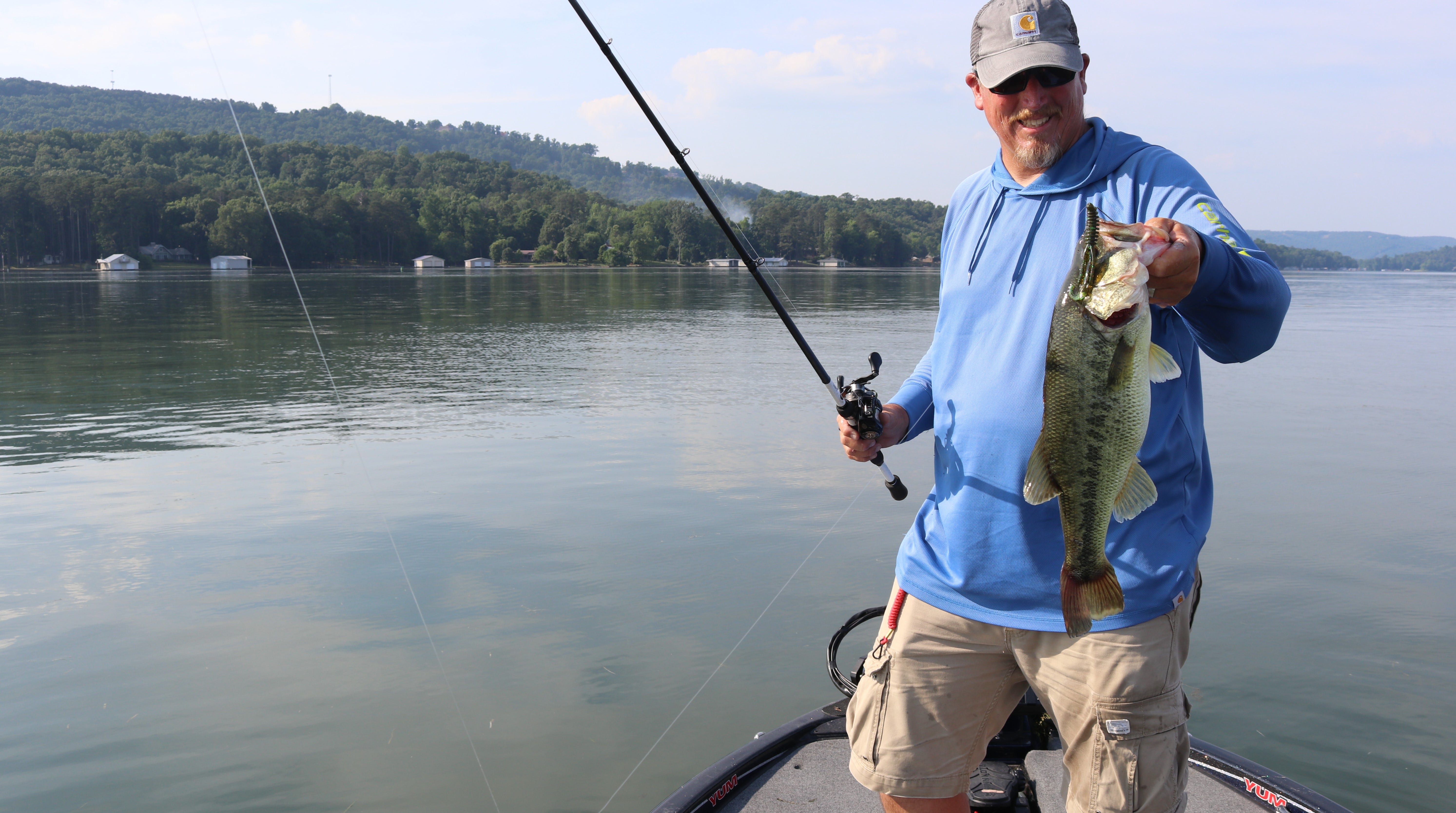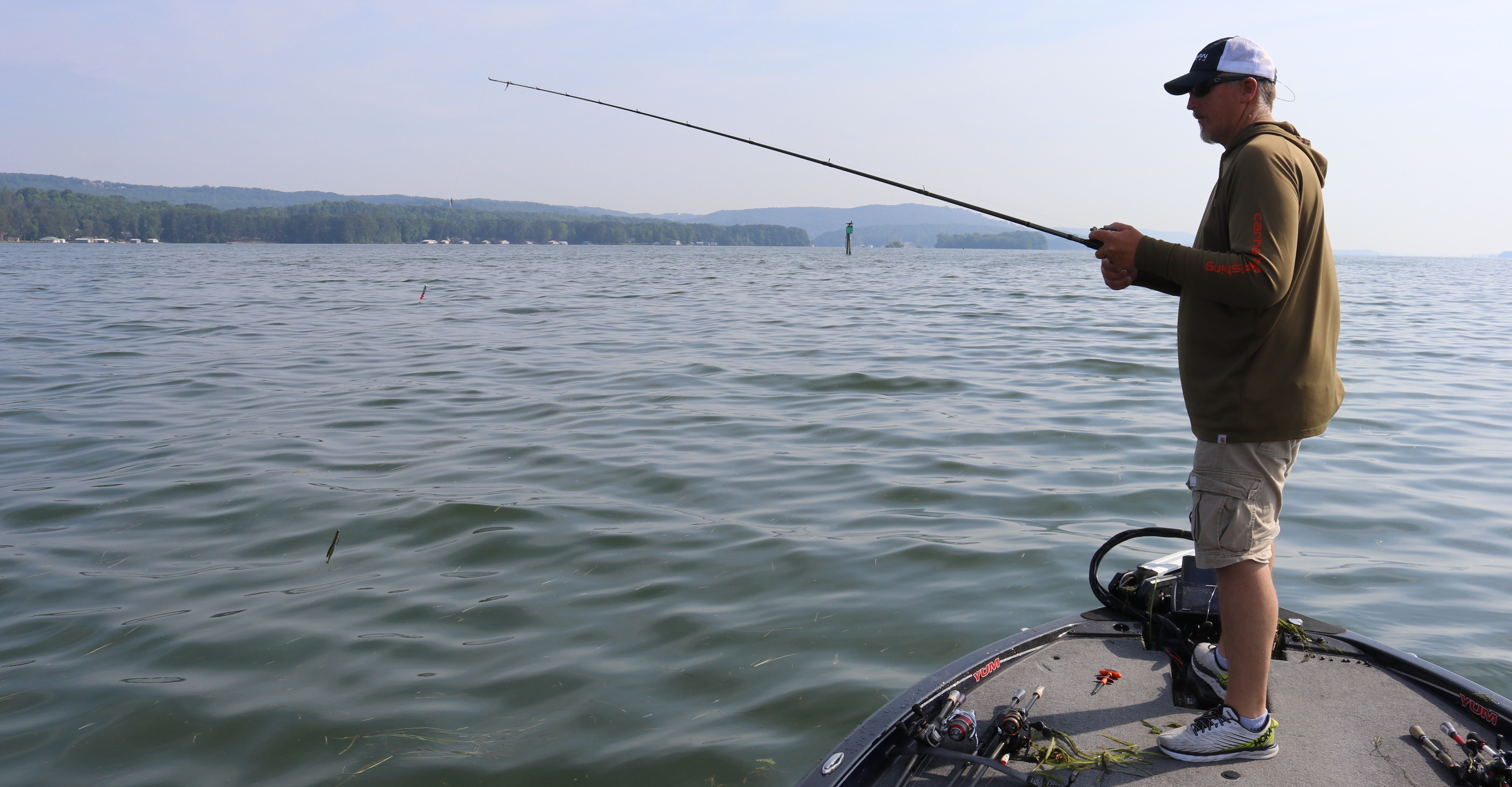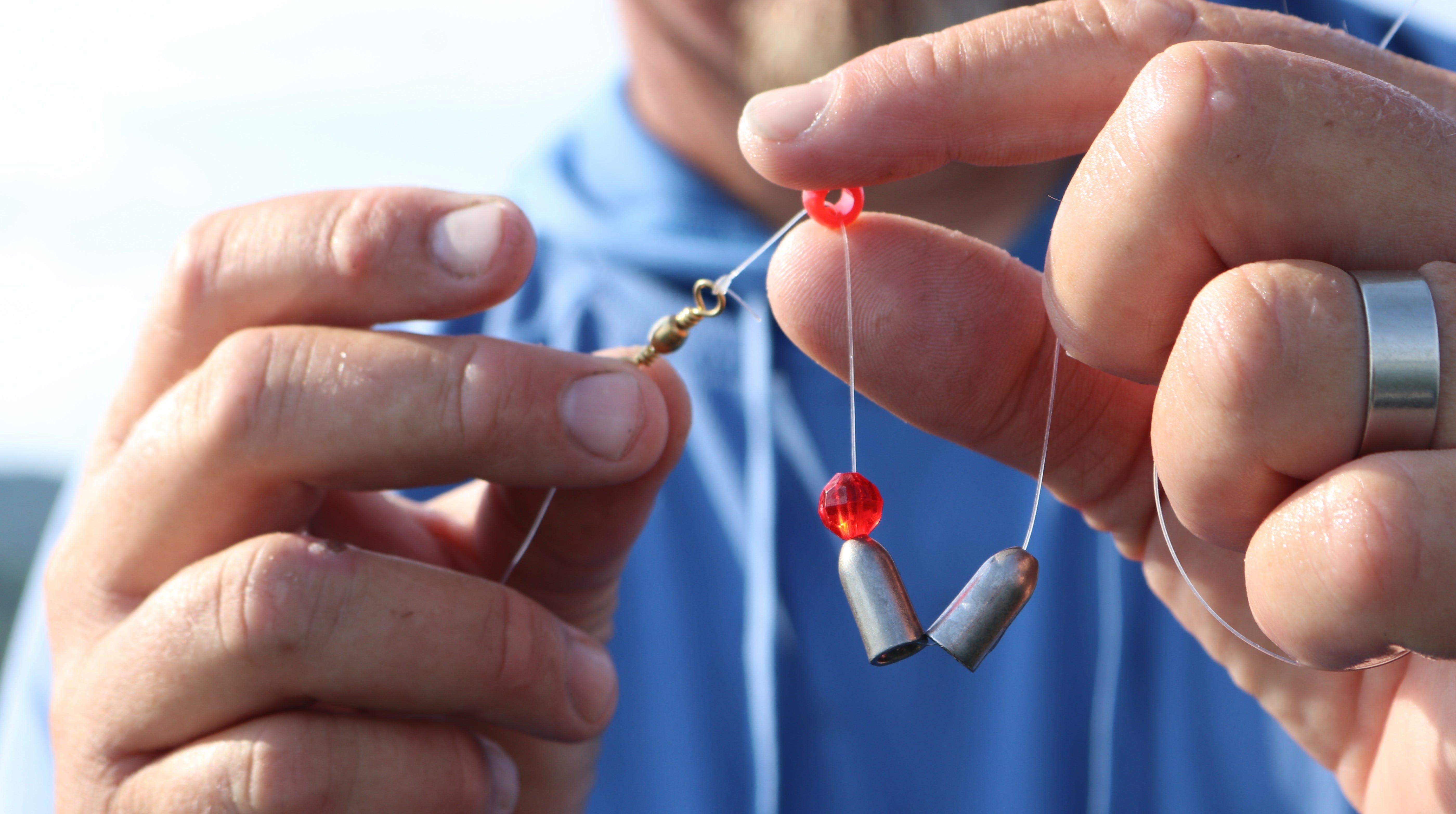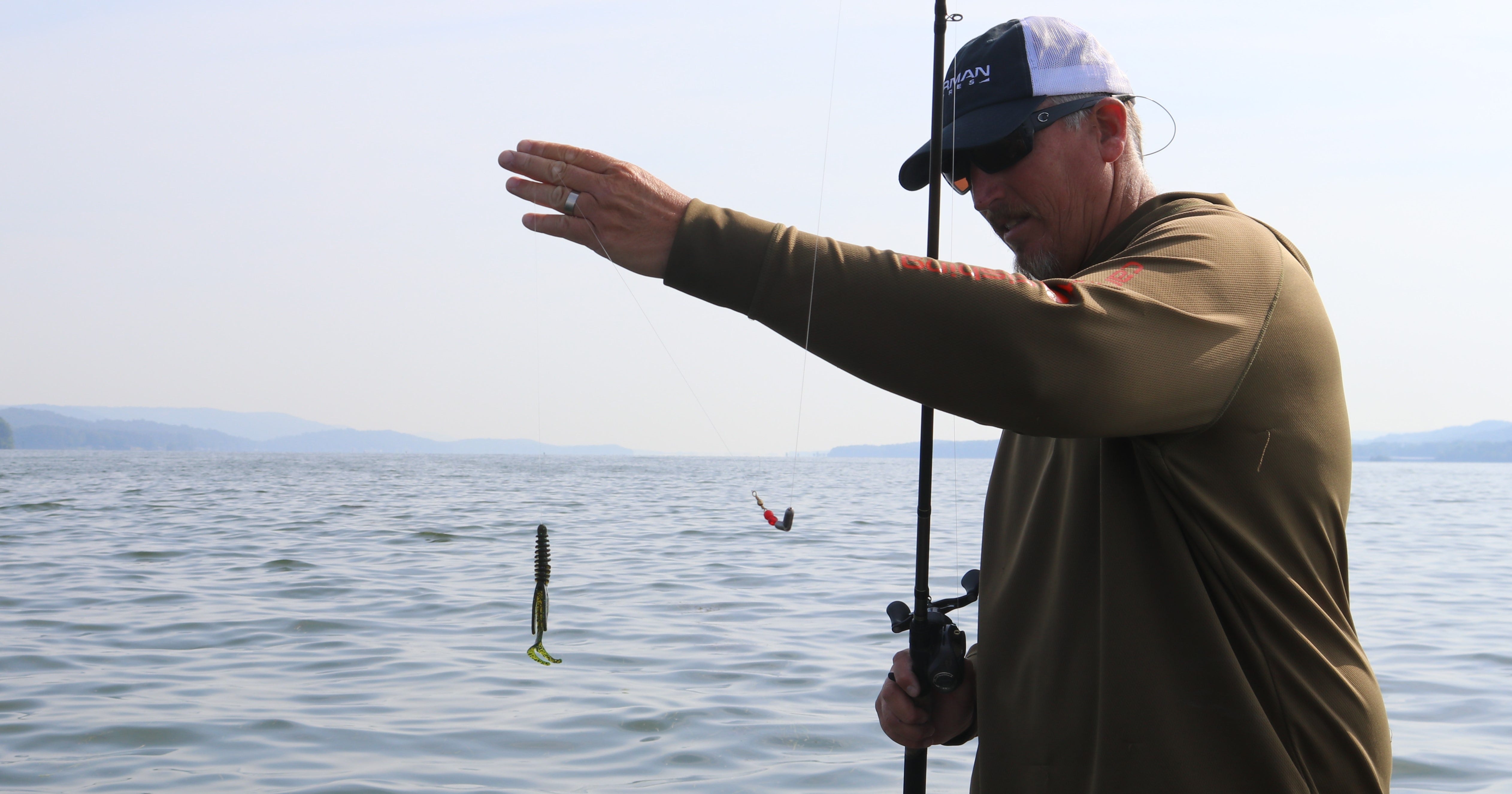- Jul 21, 2021
A Complete Guide to Carolina Rig Fishing
The Carolina rig is highly effective for catching bass in a broad range of situations. Here’s what you need to know for Carolina rigging.
Jimmy Mason doesn’t fish the same areas across the calendar, and his bait selection certainly varies by season. However, there is one bass fishing rig he knows he can count on every month of the year — the Carolina rig.
“It works year ‘round, and I always have a minimum of two in the rod locker,” the Pickwick/Guntersville guide and tournament pro said. “This is a very versatile rig that can serve many purposes.”
Noting that he’ll vary his Carolina rig action with different styles of baits for active and lethargic periods, Mason summarizes his seasonal preferences.
By the Season


- Spring — Great search bass fishing tool for locating pre-spawners staging in grass or on points and secondary points. Also effective for fish spawning on offshore bars.
- Summer — When lethargic post-spawners first depart the spawning areas, the Carolina rig makes a very convincing presentation through transition zones with deeper grass.
- Fall — While bass are schooling on bait over flats and bars, Mason can often catch some of the bigger fish on the bottom. These older, wiser fish typically hold below the smaller ones and pick off wounded baitfish that flutter through the water column.
- Winter — Mason uses the C-rig least during the coldest months. However, he will strategically employ this technique when the water temperatures are falling into the 50s to target fish that are pulling out of the creeks and onto the edge of the main river channel grass. Particular targets include shell beds, creek channel intersections, points and high spots blocking current.
BENEFITS


Presenting a bait on a leader that trails behind a heavy weight delivers an elevated, and therefore, highly visible presentation, while maintaining the bottom contact that ensures maximum sensitivity. The latter point proves essential for keeping the bait in high-percentage hard spots.
“This presentation also lets the bait flow more naturally,” Mason said. “With no weight on the bait to restrict its movement, the current works the bait for you.”
Mason also likes the ability to make a long cast and get his bait down quickly. Cool thing about the C-rig is its thoroughness: “This is a rig that lets you fish slow, fast. You can cover lots of water, but do so thoroughly.”
The Setup


Starting with 17- to 20-pound fluorocarbon main line, Mason uses a No. 7 brass swivel to attach a 15-pound fluorocarbon leader (copolymer if he needs maximum buoyancy around grass). Standard leader length is 4 feet, but Mason extends that to 5-6 feet in spring scenarios, when he needs to float his bait above new growth grass.
Mason generally fits his main line with 3/4 to 1 ounce in total weight, but he divides this into two tungsten bullet weights (two 3/8- or two 1/2-ounce weights). Positioning one of the weights facing up and one facing down keeps the broad ends opposing one another for maximum clacking noise.
For maximum sound appeal, Mason adds one glass bead and one plastic bead between his lower weight and the swivel. Glass impacting tungsten creates a water-piercing sound, but that’s also a fragile relationship prone to knot damaging fractures.
“That’s why I use a plastic bead with a wide (interior diameter),” Mason said. “When I put it on the main line, it’s shielding my knot. Over the course of the day, as you’re dragging it, there are no chips of glass touching the knot.”
Tackle & Delivery


Launching a lengthy Carolina rig requires the right tools and Mason finds he can get the right amount of casting leverage and hook-setting power with a 7-3 medium-heavy Lew’s Magnum Jig Rod. Made with a moderate-fast action, this rod provides plenty of fish-whipping power, along with the flexibility needed for long casts.
“When I set the hook, this rod’s going to flex between the middle part to the tip,” Mason said. “I want some bend to it, but I don’t want a flimsy rod; I want some backbone to it.”
Casting such a lengthy rig requires not only force, but technique. Mason offers this advice: “The biggest thing is that you wind up on the backswing. You want your line tight between the tip of your rod and the weight when you’re making that backswing, so it’s almost like you’re making a figure-8.
“You’re looping it around your head, like a fluid motion of a circle, versus back and forward. When you do that snap back and snap forward motion, you lose a lot of power; you lose a lot of momentum. You want your bait in constant motion from the time you bring it back behind your head until the time you drive it forward.”
Another tip: Don’t engage the reel until the bait is on the bottom. Once his rig breaks the surface, Mason ensures maximum bottom coverage by paying out a little more line to gain a little extra distance.
Retrieves are best made with a low rod-sweeping motion that uses lateral body motion for a smooth bottom-bumping presentation. Mason calls it “counting rocks” — the subtle detection of every little bump and tug. This bottom reading style lets him know when his bait’s about to pass over a promising spot.
Best Baits


As Mason explains, the key to maximizing a Carolina rig’s year-round potential is varying your baits. Unlike flipping cover, where bait size and style may impact penetration and efficiency, Carolina rigging is much more accommodating to a variety of bait styles.
Mason’s favorites include:
Gene Larew HooDaddy Jr. — His most common bait choice, Mason most often uses this one for deep structure. He particularly likes the HooDaddy Jr. because its rings catch air to keep the bait up in the water column, while collapsing on the bite for clean hook ups.
YUM Christie Craw – If he believes the fish are feeding on craws (livewell regurgitations often show this), Mason will have at least one of his anglers throwing the Carolina rig. Considering how the rig’s bottom-bumping, start-and-stop motion creates a darting, surging bait presentation, Mason believes this looks a lot like a fleeing crawfish.
When Mason’s hosting anglers uncomfortable with the flipping technique, he’ll fish the Christie Craw – or the YUM Spine Craw – on a finesse Carolina Rig with an 18- to 24-inch leader.
“This smaller Carolina rig is good for bedding bass and for bream beds,” Mason said. “When you can’t see the fish, it’s a dynamite way to fish."
YUM Christie Critter — This one’s never a bad idea, but it seems to excel during pre-spawn, when fish are ganged up on bars outside spawning areas; or in the summertime when they congregate on main river bars.
“I also like this bait when the water is dirtier, because the bigger bulk creates more displacement and makes it easier to find,” Mason said.
YUM Dinger (5-inch) — A good bet when you need a more compact profile, especially when fish are keyed on shad style baits. Think: fall schooling.
No question, Jimmy Mason believes in the Carolina rig so much so that he said it’s hard to fish it wrong. The key to maximizing this potential, he said, is an effective hook set.
“When you go to set the hook, you’ll make a low sweep to the side and just take your time,” Mason said. “Most of the time, the fish are going to have it good, but that low hook set to the side will give you a much higher landing percentage.”
Lurenet Bait School: Learn How Franks Scalish Builds a Carolina Rig



